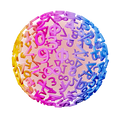Applications of the Algebraic Identities
Using the Algebraic Identities in Reverse
It’s very useful to know what looks like when it has been expanded, but it’s often even more useful to know how to rewrite . This means that even though , it’s just as important to remember the reverse, that .
Example 1
Factorize by applying the first algebraic identity in reverse
You want to end up with an expression of the form , which means you need to find and . The expression you have been given is of the form . Because the first terms in the two expressions are and , is equivalent to .
So, you can find by setting and checking which values for yield :
Let’s look at an example where you also need to factor out common factors.
Example 2
Factorize
First, you need to factor out the common factors:
Simplifying Rational Expressions
If you apply everything you learned about factorization and algebraic identities, you can now simplify fractions that look like this:
When you simplify fractions, it’s extremely important to remember that common factors need to be present in all terms. If there’s a term in the fraction without a factor all the other terms have, you can’t cancel that factor! Here are some examples:
Example 3
Simplify the fraction
This fraction has two terms in the numerator and three terms in the denominator. The two terms in the numerator are and . The three terms in the denominator are , and . There are no factors that are common between all these terms, so you can’t cancel anything as-is.
But, if you factorize the numerator and denominator separately, you’ll see some common factors appearing:
Now that you’ve factorized the numerator and denominator, you’re left with one term in each: in the numerator and in the denominator. You can see that is a common factor between the two terms, which means it can be canceled:
Note! As you can see in this example, a term doesn’t have to be a single variable. It can also be an expression, such as .
Example 4
Simplify the fraction
There’s nothing to be done with the numerator, but if you multiply the denominator by 4, you get
This new denominator is much easier to work with. Because you multiplied the denominator by 4, you need to do the same with the numerator. That means the numerator becomes . You can see that is a common factor, which gives you





















